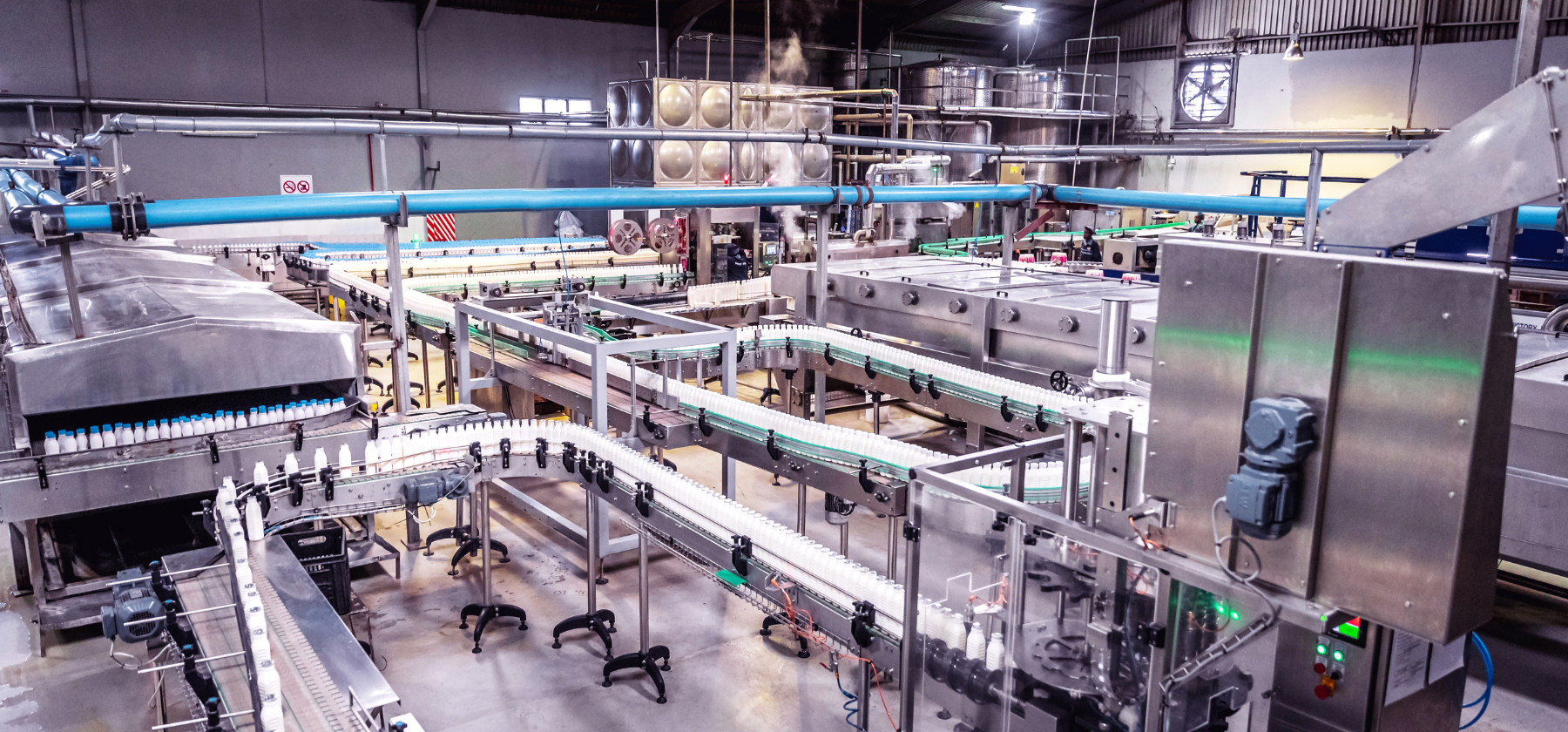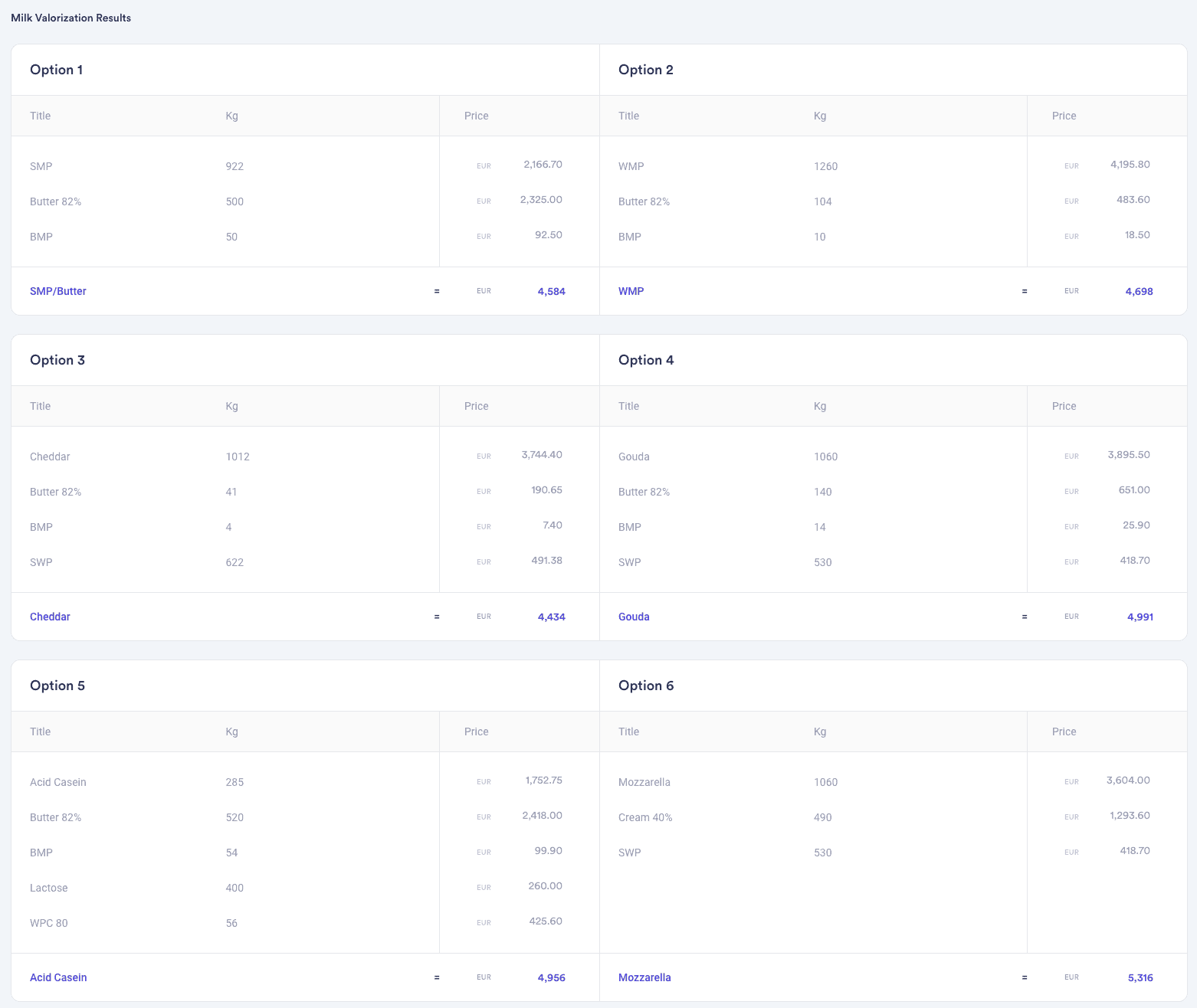In the volatile and competitive dairy industry, profitability hinges on making the right choices, at the right time. And with so many dairy products to choose from, how can a producer determine which product will yield the highest profits? That’s where Vesper’s milk valorization model come into play: a preset calculation tool designed to help decide what dairy commodity gives the best value in return based on 10,000 litres of milk. Besides helping producers increasing their value, it helps them save time by doing all the number crunching, and gives a rough estimate of future production and price levels. In this article we will explain to you how, by kicking off with an example.
How Vesper’s valorization model works
Whether your goal is to produce SMP and butter, whole milk powder, acid casein, or cheese like cheddar, gouda, and mozzarella, Vesper’s valorization model is here to guide you in determining the highest yield from 10,000 litres of milk. In table 1 you’ll find an example of what the input table of the valorization model looks like. You can either rely on the default prices that represent the latest values from the Vesper Price Index, updated every Wednesday, or play out different scenarios by customising the twelve commodity prices yourself.
Table 1: Vesper’s Milk Valorization input table
*Note that manufacturing and production costs are not taken into account in this valorization model. The quantities produced within each stream are based on using 10.000 litres of milk.
Choosing what product(s) to produce is heavily influenced by the current market prices for each of these commodities. Additionally, this model considers by-products generated during the production process, which can also be sold for additional profit.
Based on the input provided in the table 1, our Milk valorization model generates the output represented in table 2. Based on the commodity prices provided, Mozzarella emerges as the most valuable product to produce, with a value of 5,316 euros for every 10,000 litres of milk.
Table 2: Vesper’s Milk Valorization output table
Drive market-driven production strategies
The flexibility of the model allows dairy producers to adapt to market dynamics quickly. When a particular product becomes highly valorized, indicating higher returns, producers can allocate a portion of their milk supply to produce that commodity. Conversely, products with lower valorization might witness reduced production.
This mechanism offers valuable insights into the potential supply side of the market,
allowing you to discern patterns such as when production increases while prices decrease, or vice versa. For example, when valorization for cheddar, gouda, and mozzarella cheese is high, it is likely that cheese production in Europe will increase. This early awareness empowers producers to plan their production volumes accordingly and align their businesses with market demand.
One such case study showcasing the practical application of the Vesper calculation is the example the case study we conducted with Grozette, a global cheese manufacturer specialised in grating and drying cheese for the retail, catering and industrial sectors in around 30 countries. By using valorization data, Grozette can anticipate changes in cheese production and predict price fluctuations in the coming weeks or months. This allows Grozette to easily explain to customers how their prices are established.
As Ewald Bontje, Owner of Grozette explains “People often believe that cheese prices are established based on the milk price, but it is often actually the other way around. Vesper’s calculations help you calculate what producers are willing to pay for milk based on a commodity’s yield. Say you want to produce Gouda and Sweet Whey Powder, then Vesper’s calculations help you calculate the highest amount a producer can afford to pay for milk. They help me give a better sense of how the market will develop and a better sense of how competitors will behave, as these calculations are a huge determinant of how many products will be supplied in 4 to 6 weeks to come by manufacturers.”
Start calculating with real-time market data
Vesper’s Milk Valorization model serves as a valuable asset, offering real-time market insights and empowering dairy businesses to adapt to changing market conditions. By maximizing returns on different product streams and aligning production with market demand, dairy producers can thrive in a competitive industry and enhance their overall profitability.





